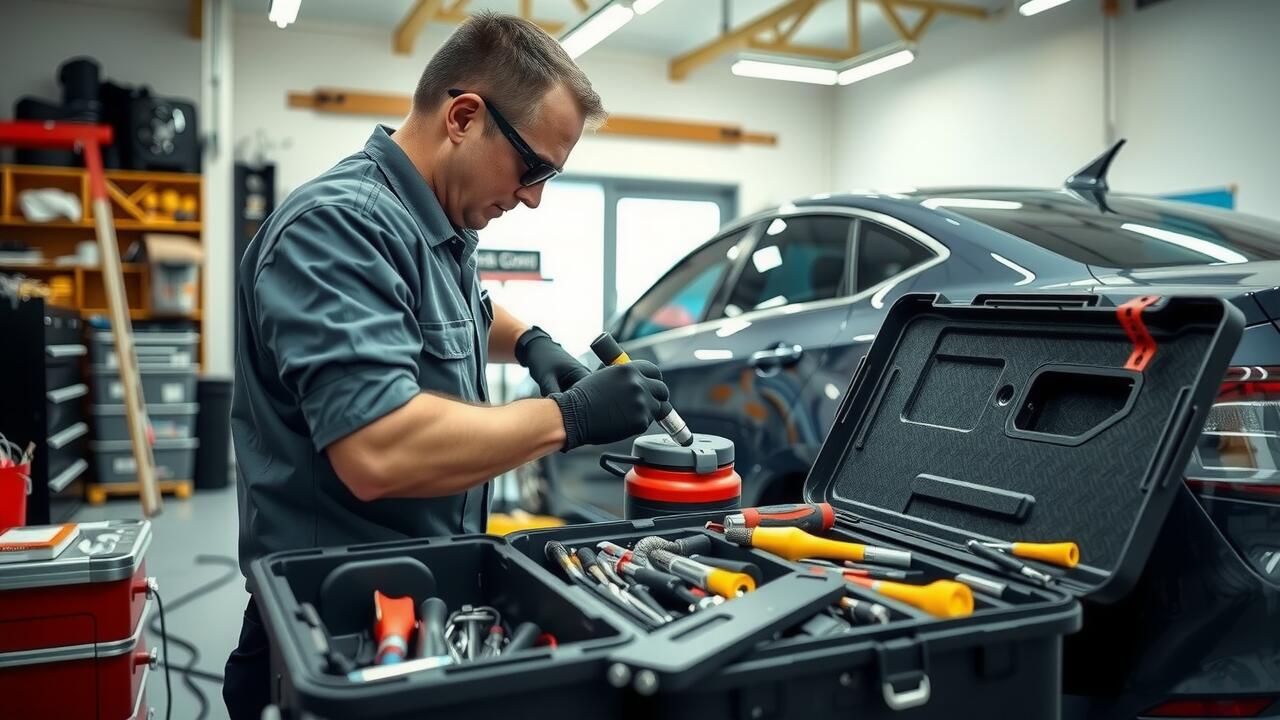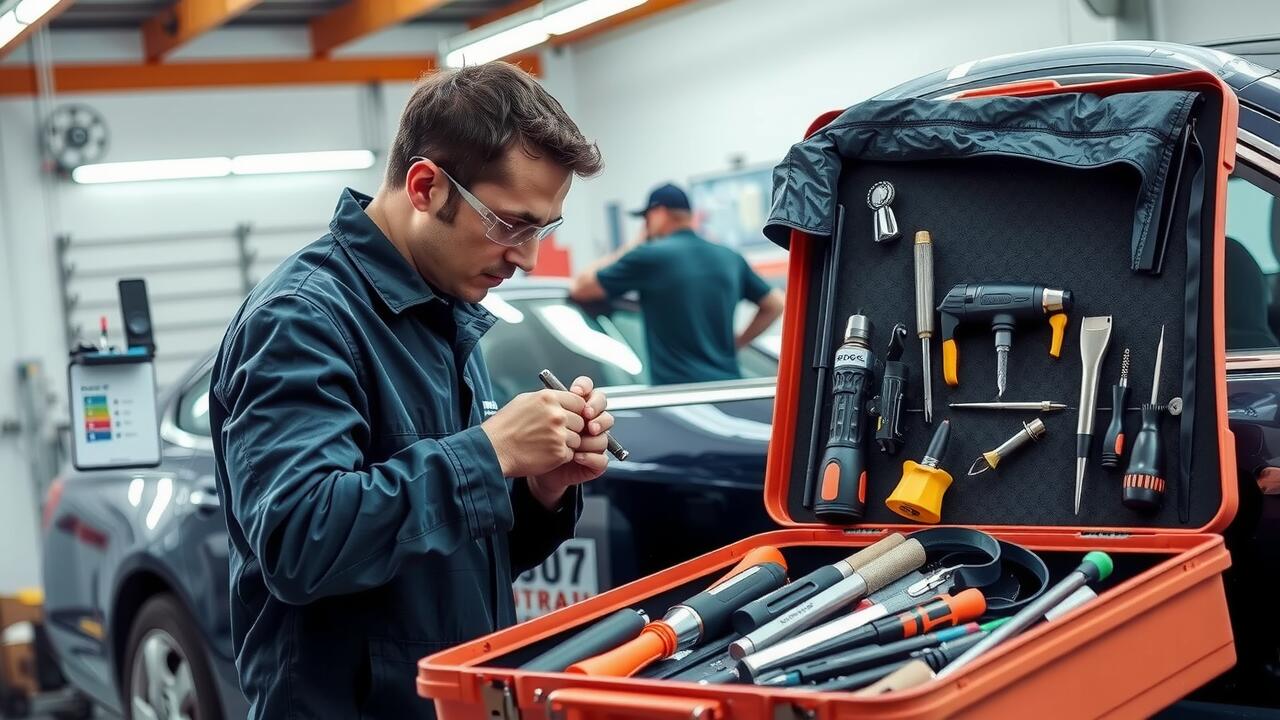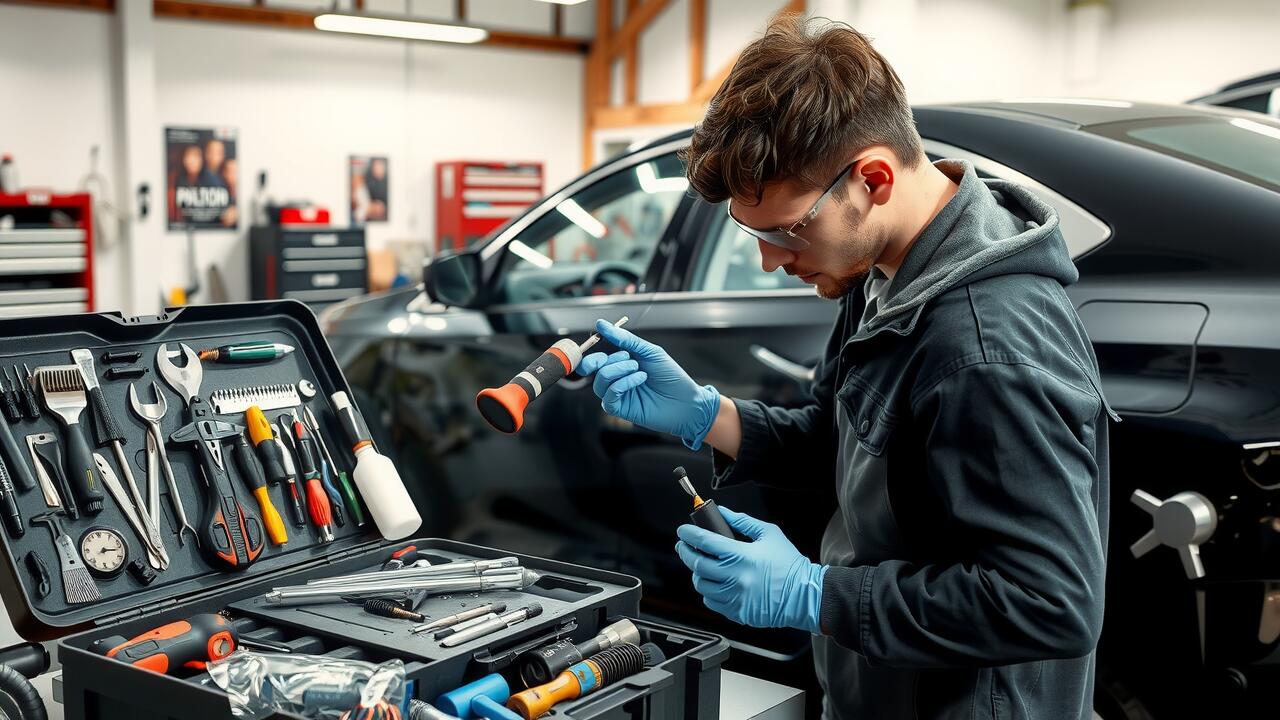
Risk of Inexperienced Technicians
Inexperienced technicians pose significant risks when performing Paintless Dent Repair. They may not fully understand the nuances of different materials and techniques required for effective dent removal. A lack of knowledge regarding vehicle construction can lead to improper handling, resulting in further damage that may not be easily fixable. Choosing someone without a proven track record can lead to unsatisfactory results and further complications down the line.
Assessing the qualifications and experience of a technician is crucial for achieving quality outcomes with Paintless Dent Repair. Technicians should have formal training and practical experience to navigate various denting situations successfully. Reviews and recommendations from previous customers can provide insights into a technician's competence. Ensuring that the professional is certified helps minimize potential issues and enhances the likelihood of a successful repair.
Importance of Choosing Qualified Professionals
Choosing qualified professionals for Paintless Dent Repair significantly influences the overall outcome of the service. Technicians with experience understand the intricacies of vehicle materials and the nuances of dent removal techniques. This expertise allows them to avoid common pitfalls that can lead to unsatisfactory results, ensuring that the repair process is both effective and safe for the vehicle's surface.
Working with certified specialists not only enhances the quality of the repairs but also ensures adherence to industry standards. Professional technicians utilize proper tools and techniques, which minimizes the risk of causing further damage to the vehicle. With qualified professionals, customers can expect a level of reliability and efficiency that contributes to a better overall experience with Paintless Dent Repair.
Customer Satisfaction Concerns
Customer satisfaction is a significant concern when it comes to Paintless Dent Repair. Clients often expect a flawless outcome, reflecting the high standards typically associated with this method. However, if the repair is not executed properly, it can lead to disappointment. Some customers may find that their dents are not entirely removed or that the surface finish lacks the quality they anticipated. This gap between expectation and reality can lead to dissatisfaction, which underscores the importance of effective communication during the repair process.
Managing expectations is crucial for both technicians and customers involved in Paintless Dent Repair. Prior to beginning the work, clients should be informed about what the process can realistically achieve. While many dents respond well to this technique, others may be more challenging to address. Setting clear guidelines on what can be accomplished helps mitigate potential frustrations after the service is complete. Providing clients with a comprehensive understanding of the limitations and benefits of Paintless Dent Repair fosters trust and enhances the overall customer experience.
Managing Expectations During the Process
Paintless Dent Repair can be an effective way to restore a vehicle's appearance without the need for traditional bodywork. Understanding the limitations of this method is crucial for customers. Not all dents can be fully removed, especially those that are deep or located near the edges of panels. While skilled technicians can work wonders, there remains the possibility that some imperfections may still be visible after the repair.
Customers should also be aware that the duration of the repair can vary, depending on the extent of the damage and the technician's expertise. It is not uncommon for the process to take longer than initially estimated, which may lead to frustration. Clear communication with the repair shop about timelines and achievable results can help set realistic expectations and lead to greater satisfaction with the outcome of Paintless Dent Repair.
Potential for Structural Damage
Paintless Dent Repair (PDR) is often viewed as a safe and effective method for removing dents from vehicles without compromising their original paint. However, not all dents can be successfully repaired using this technique. If the damage is too severe or involves specific areas of a vehicle's structure, attempting PDR can lead to further issues, potentially jeopardizing the integrity of the car. Inadequate handling around critical structural components can exacerbate existing problems or create new ones.
Understanding the limitations of Paintless Dent Repair is crucial for car owners. The process can sometimes obscure underlying damage that might not be immediately visible. A technician's approach to a dent may inadvertently stress the vehicle's frame or panels if they lack experience or fail to assess the dent properly. This can lead to a compromised vehicle structure, affecting not only aesthetics but also safety and performance. Therefore, it is essential to address the potential risks associated with PDR to ensure that your vehicle retains its integrity.
Understanding Vehicle Integrity
Understanding vehicle integrity is essential when considering Paintless Dent Repair. This method is designed to restore the surface of the vehicle without compromising its structural components. However, if not executed properly, there is a risk that underlying issues may arise. Dents located near critical areas, such as frame joints or welds, can lead to structural complications if the repair does not address the full extent of the damage.
The long-term integrity of the vehicle can be at stake if improper techniques are utilized during the Paintless Dent Repair process. Qualified technicians analyze the type of dent, its location, and the metal's characteristics to ensure no additional stress is placed on the vehicle's body. An in-depth understanding of the vehicle's design and material properties is crucial for maintaining overall durability and performance. When repairs are undertaken with a focus on these factors, clients can enjoy the benefits of a flawless finish while safeguarding their vehicle's integrity.
FAQS
What is paintless dent repair (PDR)?
Paintless dent repair (PDR) is a technique used to remove minor dents and dings from vehicle surfaces without the need for repainting. It involves carefully massaging the metal back to its original shape using specialized tools.
What are the main risks associated with paintless dent repair?
The main risks include the potential for inexperienced technicians causing further damage, customer satisfaction concerns due to unrealistic expectations, and the possibility of compromising the vehicle's structural integrity if the repair is not executed properly.
How can I ensure I choose a qualified professional for PDR?
To choose a qualified professional, look for technicians with certifications, positive customer reviews, and experience in the industry. Asking for before-and-after photos of their previous work can also help gauge their skill level.
Why are customer satisfaction concerns prevalent in paintless dent repair?
Customer satisfaction concerns often arise from mismanaged expectations about the repair process, the results, and the time frame. Clear communication and understanding of what PDR can achieve are crucial for ensuring a positive experience.
Can paintless dent repair cause structural damage to my vehicle?
Yes, if PDR is performed by an inexperienced technician, there is a risk of compromising the vehicle’s structural integrity. It's important to ensure that the technician is skilled and understands the complexities of the vehicle's design to mitigate this risk.

